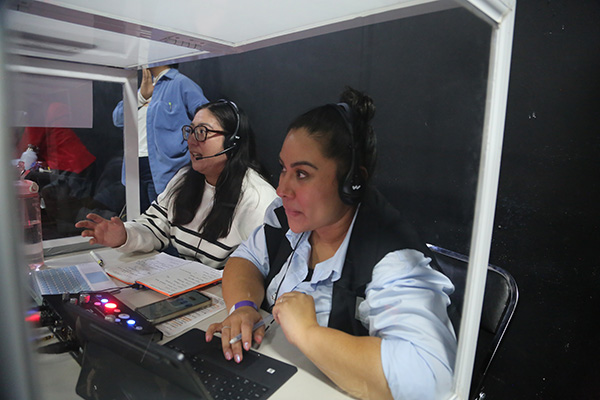
CIL: learning languages through an innovative perspective
By Naomi Torres,
UAEH student from the Teaching English B.A
Photographer: Carlos Eduardo Cruz Hernández

By creating projects such as the International Language Congress (CIL), the Universidad Autónoma del Estado de Hidalgo (UAEH) seeks to shape experts capable to face the modern challenges. This is a linguistic space, organized by the Centro de Lenguas (CeL) where experiences and knowledge are shared, related to themes like: teaching, translating, interpreting and the autonomous learning of languages.
Este mes, Revista Gaceta UAEH se enfoca en la quinta edición del Congreso, centrada en las ciencias cognitivas y el aprendizaje de lenguas. Gracias a sus raíces anglófonas, el Instituto de Artes (IA) de la UAEH fue sede de este encuentro lingüístico que contó con la participación de la Embajada del Reino Unido y la Universidad Autónoma de Querétaro (UAQ) como invitadas de honor.
This month, Revista Gaceta UAEH explores the fifth edition of this Congress, focused on the cognitive sciences and language learning. The Instituto de Artes (IA) was considered as the venue of this linguistic gathering thank to the anglophones roots present in there, in which guests of honor such as the United Kingdom Embassy and the Universidad Autónoma de Querétaro (UAQ) were participants.
CIL as a sharing venue
Durante tres días, se llevaron a cabo más de 150 ponencias con la participación de cerca de 120 expertos nacionales e internacionales, Además, también se realizaron mesas redondas, conferencias magistrales, talleres y otras actividades, en las que participaron tanto docentes de la comunidad Garza como de otras instituciones educativas.
During three days, more than 150 presentations happened, having the attendance of nearly 120 experts, national and international; moreover, this congress round table discussions, seminars, workshops and other activities took place, where teachers and the Garza community joined in, as well as from other educational institutions.
This event gave an opportunity to foreign and different voices to acknowledge the existing challenges and reflect upon certain topics, such as:
- Contextualized teaching
Paul Seligson, British professor, pointed out that the education offered in Mexico should be coherent with the actual audience and context, since the methodology used is based in a foreign system that obstructs the learning process of the Mexican students. He indicated that “through a deeper and notable learning, we do not limitate our students but release their linguistic potential”.

- Neurolinguistic
Steeve Mercier, Canadian expert in neurodidactic, highlighted that during the teaching process of a second language, it is a must to reduce the amount of vocabulary and grammatical structures, so that any learner becomes capable of speaking the language with naturality. “Tell me how you learn and I will teach you that way”, he concluded.

- Gamified learning
Beatriz Elena Muñoz Serna, coordinator of the Teaching Languages and Culture master in the UAQ, affirmed that a fun-based approach is a great technique to control anxiety and acquire knowledge in a more efficient form.

- Native languages
María Félix Quezada Ramírez, professor and researcher at the Instituto de Ciencias Sociales y Humanidades (ICSHu), remarked that the otomí language has gone through an adaptive process among its users at the Valle del Mezquital, who wanted to communicate words and feelings that do not have a literal translation to hñahñu. For instance, the expression Ri Nandi, which means “on the other side”, currently refers to the United States, a country where a big part of the native population lives.
Nonetheless, she mentioned that even if young people can identify the language, they are not interested in learning it, which contributes to its loss. Moreover, she said that it is necessary to document the new terms to diversify its use and raise awareness upon the language state, something that could provoke people’s curiosity and promote Hñahñu learning.

- Translation and Artificial Intelligence (AI)
Luis Raúl Fernández, academic director of the Escuela de Traducción, Localización e Interpretación of Universidad Intercontinental (UIC), indicated that due to the growing use of AI as a tool for the translation process, it is fundamental for the translators to keep up to date.
“Tools such as artificial intelligence will not replace the translator expert since they still provide elements including: feelings, precision, colors and cultural knowledge that technology cannot replicate until now”, he claimed.

Next CIL edition
During the closure, it was announced that the next edition, that will be celebrated in 2027, will have “Plurilinguism, interculturality and linguistic inclusion” as the main theme, to carry on with this linguistic interchange and its teaching in a multicultural context that aims to shape professionals with a global vision.





